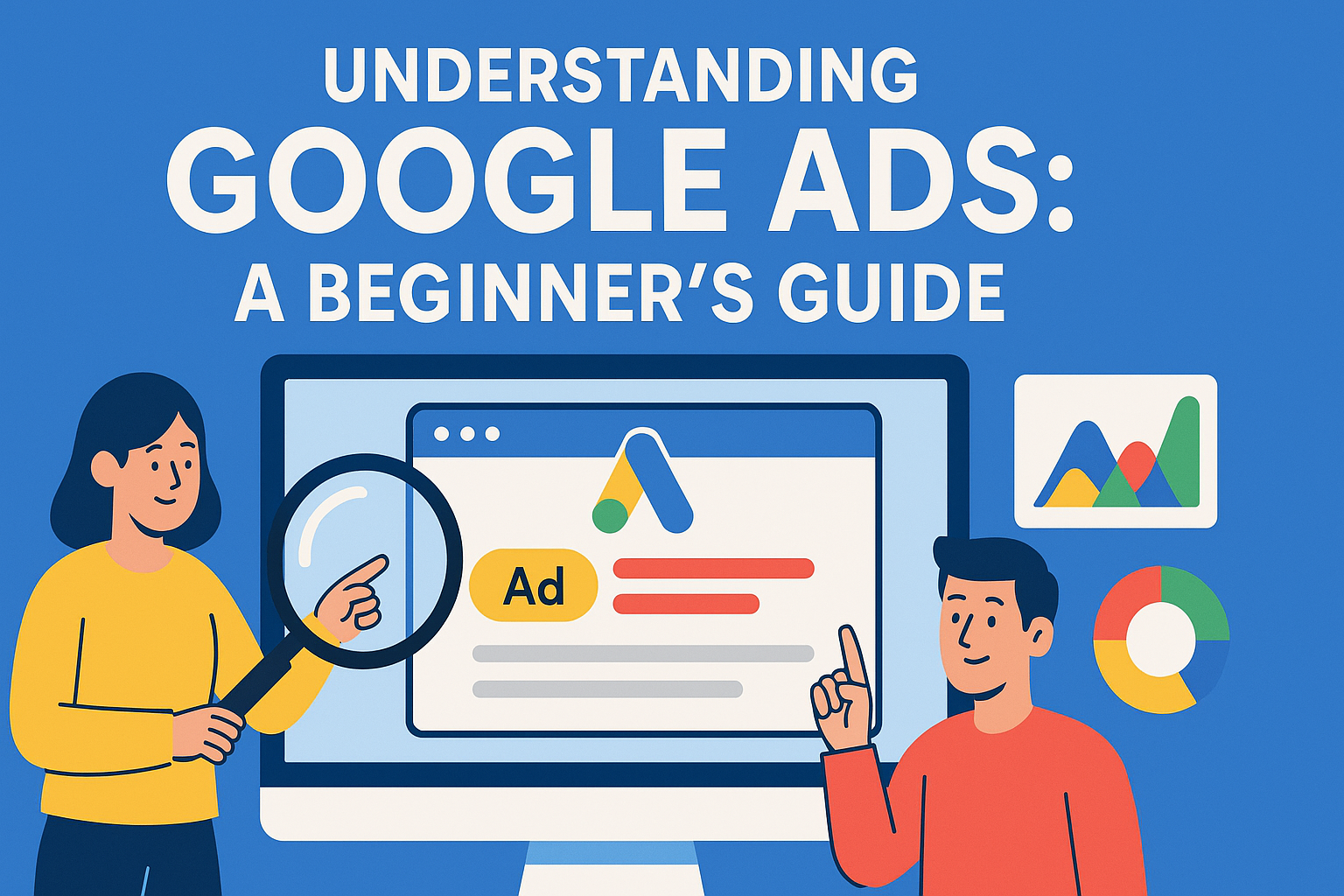Google Ads puts your business in front of millions of customers actively searching for products or services like yours. In 2023, advertisers collectively spent over $226 billion on Google Ads, underlining its importance for businesses of all sizes. As a pay-per-click (PPC) advertising platform, Google Ads ensures you pay only when someone clicks your ad, giving you full control over budgets and bids. With precise targeting by keywords, location, device, and demographics, Google Ads lets even small businesses compete with larger brands on a level playing field.
What is Google Ads?
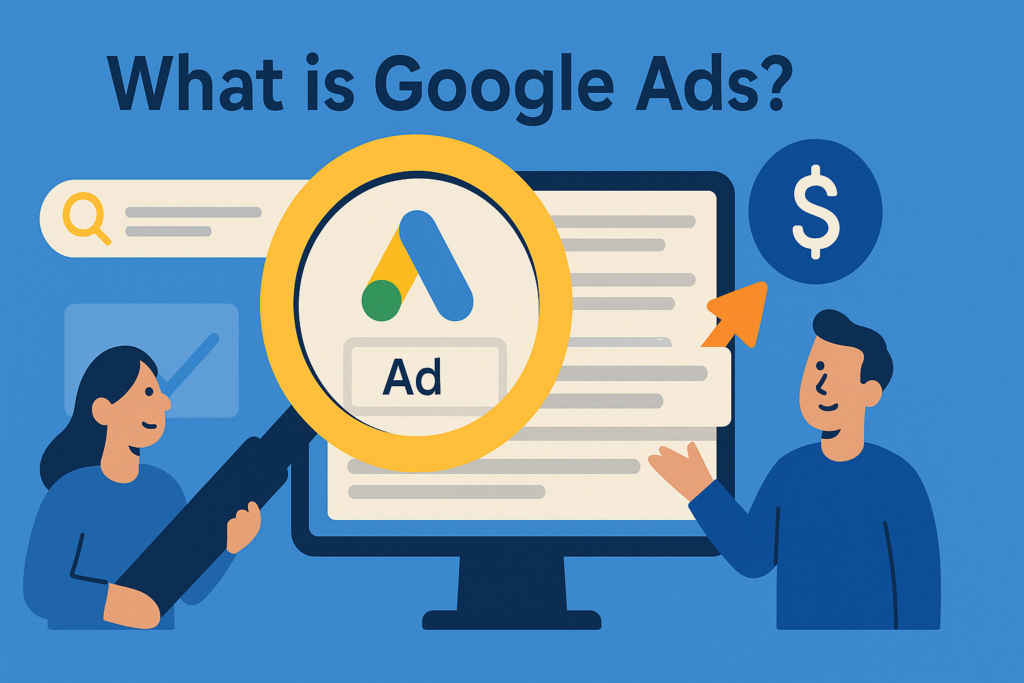
Google Ads (formerly AdWords) is Google’s online advertising platform that allows businesses to bid on keywords to have their ads appear in search results and across Google’s network. It operates on an auction model: each time a user searches, Google considers all eligible ads and ranks them by Ad Rank, which is calculated as your maximum bid × Quality Score. Quality Score (1–10) measures ad relevance, expected click-through rate, and landing page experience; higher scores lower your cost-per-click (CPC) and improve ad position.
How Google Ads Works
When a search is performed, Google’s system:
1. Finds ads whose keywords match the query.
2. Filters out ineligible ads (e.g., due to location or policy violations).
3. Orders the remaining ads by Ad Rank (bid × Quality Score).
4. Charges each winner its actual CPC, which is often just enough to beat the Ad Rank of the next-highest competitor divided by your Quality Score.
This second-price auction model means you rarely pay your full bid, making relevance (Quality Score) as crucial as bid amount.
Types of Google Ads Campaigns
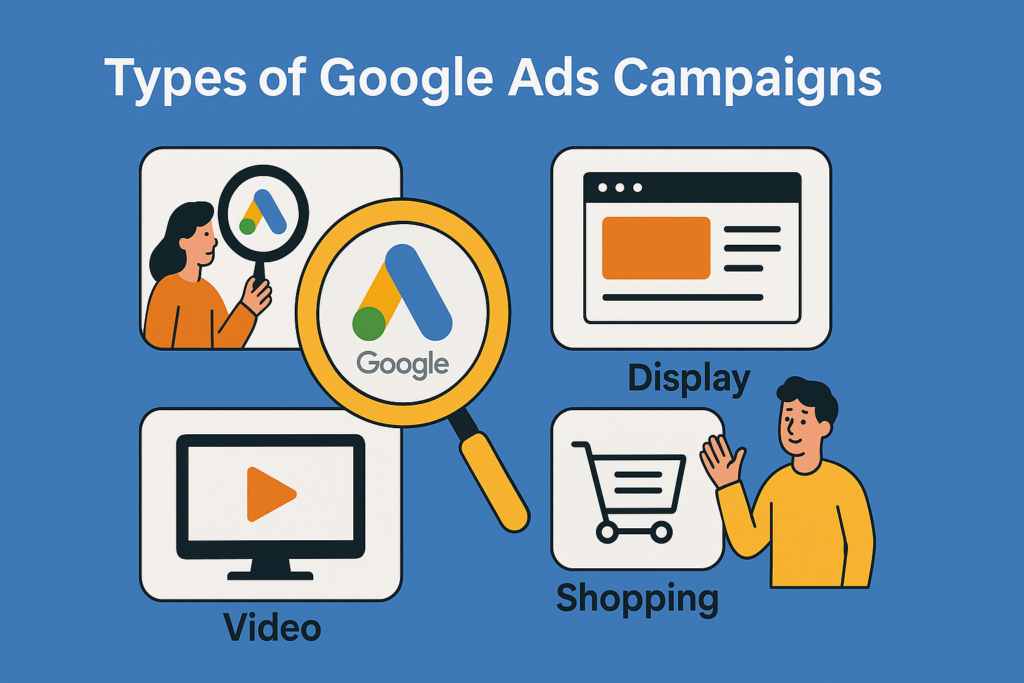
According to MarketingProfs, there are five main campaign types: Search, Display, Video, Shopping, and App campaigns.
–Search ads: Text ads on Google Search results pages.
–Display ads: Image or rich-media ads across millions of websites in Google’s Display Network.
–Video ads: Ads on YouTube (skippable, non-skippable, bumper) to build brand awareness.
–Shopping ads: Product listings with images, prices, and merchant info.
–App ads: Automated ads to drive mobile app installs across Google’s channels.
Each serves different goals—Search for immediate intent, Display/Video for awareness, Shopping for e-commerce, and App for mobile installs.
Setting Up Your First Account
1. Go to ads.google.com and click Start now. Sign in with your Google account and follow prompts to add business info, select goals, and enter billing details.
2. To access Keyword Planner, complete billing setup under Tools & settings > Billing & payments, then open Keyword Planner.
3. In Keyword Planner, choose Discover new keywords or Get search volume and forecasts to begin researching terms for your campaigns.
Keyword Research Best Practices
Use Keyword Planner to filter by average monthly searches (e.g., ≥ 30) and low competition to find high-potential terms. Focus on long-tail keywords specific 3–5 word phrases that have lower volume but higher intent and lower CPCs. Complement Planner insights with competitor gap analysis to uncover terms they rank for but you don’t. Always consider user intent informational vs. transactional to match keywords with the right landing pages and ad copy.
Writing Effective Ad Copy
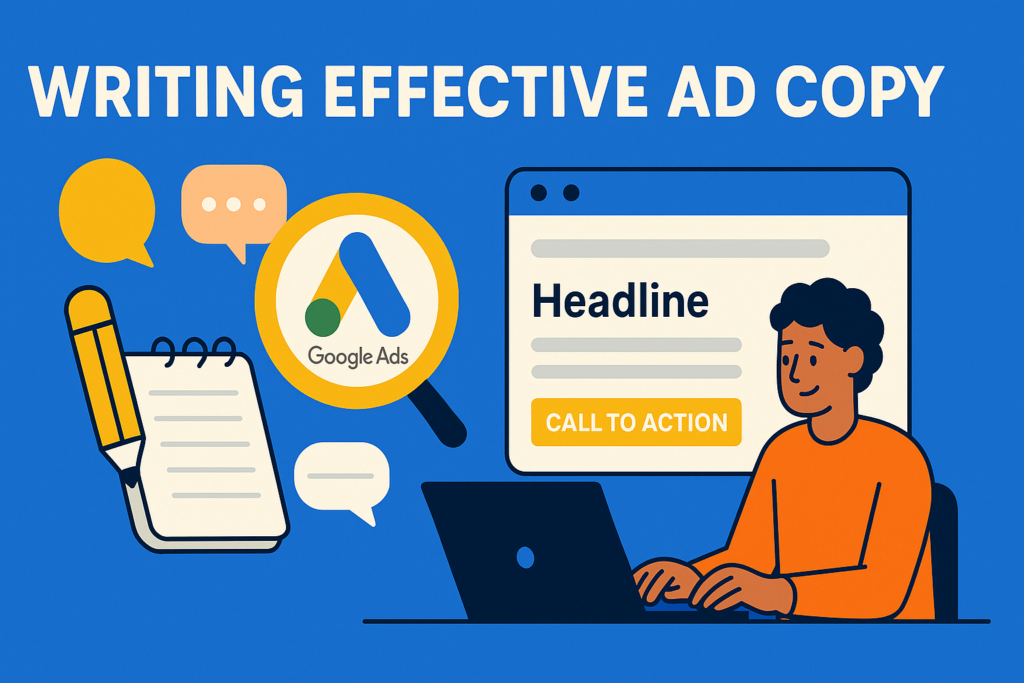
A strong ad copy aligns headlines and descriptions with user needs and keywords:
–Headlines: Up to three, 30 chars each; include primary keywords and unique value propositions.
–Descriptions: 90 chars; highlight benefits, features, and a clear call-to-action (e.g., “Shop now,” “Get a free quote”).
–Ad customizers & keyword insertion: Dynamically tailor copy to search terms at scale.
–Responsive Search Ads: Provide multiple headlines/descriptions; Google tests combinations to find top performers.
For more examples and templates, see Unbounce’s Google Ads copywriting guide.
Bidding Strategies & Budgets
You can choose manual CPC or automated bid strategies (Maximize Clicks, Maximize Conversions, Target CPA, Target ROAS) based on your goals.
–Manual CPC: Full control; set bids per keyword but requires constant monitoring.
–Maximize Clicks: Automated; aims to get the most clicks within your daily budget.
–Maximize Conversions/Value: Uses Google’s AI to optimize for conversion count or revenue.
–Target CPA/ROAS: Sets bids to achieve a specific cost-per-acquisition or return on ad spend.
Adjust daily budgets at the campaign level, and use bid adjustments for devices, locations, and times to refine performance.
Measuring & Optimizing Performance
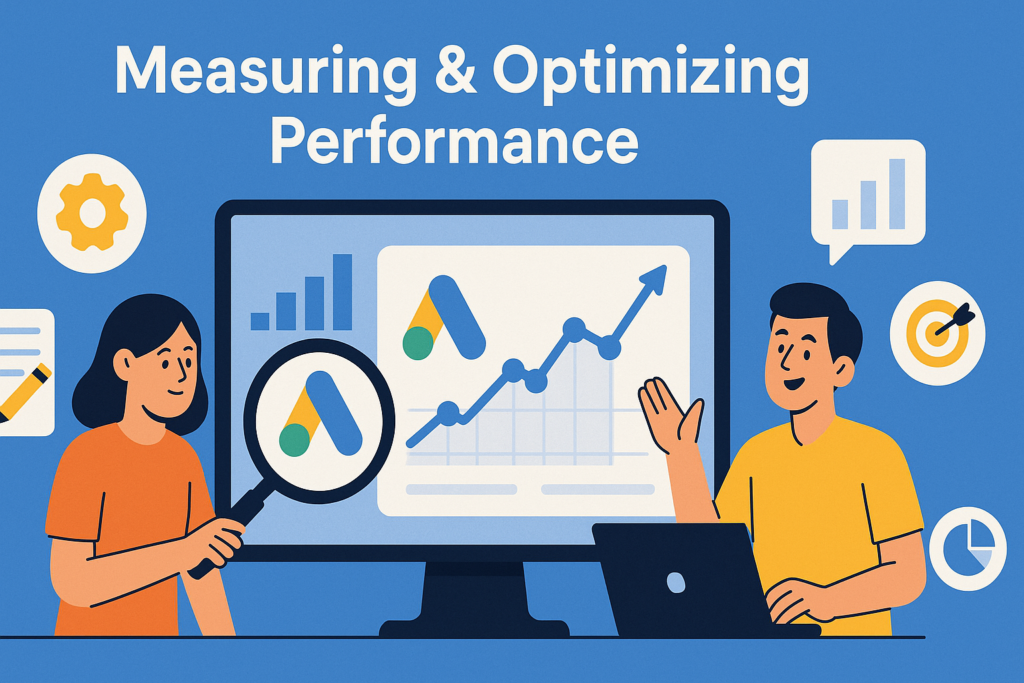
Track core metrics:
–CTR (Click-Through Rate) = clicks ÷ impressions; indicates ad relevance.
–CPC (Cost-Per-Click); shows average cost to attract a click.
–Conversion rate = conversions ÷ clicks; measures landing page/ad effectiveness.
–CPA (Cost-Per-Acquisition) and ROAS; tie spend to business outcomes.
Link Google Analytics to see post-click behavior (bounce rate, time on site) and set up conversion tracking for purchases, sign-ups, or calls. Regularly review search terms, Quality Score, and Auction Insights to identify optimization opportunities.
Tips & Common Mistakes to Avoid in Google Ads
–Avoid overly specific low-volume keywords; they won’t trigger ads until volume increases—use broader or phrase match instead.
–Don’t overbid on generic head terms; start with manual CPC on long-tail exact matches, then scale with automated bids once you have conversion data.
–Use negative keywords to filter irrelevant traffic and protect budget.
–Don’t neglect ad group structure; group 5–15 tightly themed keywords per ad group for relevance and Quality Score.
–Avoid poor landing page alignment; ensure landing pages deliver on ad promises for better Quality Score and conversion rates.
Conclusion & Next Steps
Google Ads offers powerful tools to reach customers at every stage of the funnel. Start by setting up your account, conducting thorough keyword research, and writing relevant ad copy. Choose bidding strategies aligned with your budget and goals, then monitor key metrics to optimize performance. As you gain data, experiment with different campaign types, bids, and creatives. Continual testing and learning will drive better ROI and help you scale your advertising efforts.
FAQs
1. What is Google Ads and how does it work?
Google Ads is Google’s PPC advertising platform where advertisers bid on keywords in real-time auctions. Ads are ranked by Ad Rank (bid × Quality Score) and charged on a cost-per-click basis when users click them.
2. How much does it cost to start with Google Ads?
You set your own daily budget and maximum CPC bids, so you can start with as little as $5–$10/day. Average CPCs vary by industry but often range from $1–$2 on search networks.
3. What is Quality Score in Google Ads?
Quality Score (1–10) reflects ad relevance, expected CTR, and landing page experience. Higher scores lower your CPC and improve ad position.
4. How do I choose the right keywords?
Use Keyword Planner to filter for volume (e.g., ≥ 30 searches/month) and low competition. Focus on long-tail exact matches for better intent and lower CPCs, then expand with phrase or broad match as you gather data.
5. How do I measure the success of my campaigns?
Track CTR, CPC, conversion rate, CPA, and ROAS in Google Ads. Link Google Analytics to view post-click behavior (bounce rate, time on site) and set up conversion tracking for purchases or leads to see real ROI.
At Balistro, we specialize in helping businesses grow through effective digital marketing strategies. From Google Ads to Meta Ads, we deliver data-driven campaigns that maximize your ROI and drive real results. If you’re looking to boost your online presence, generate leads, or scale your e-commerce business, our expert team is here to help. Contact us today to learn more about how we can support your advertising needs!

